10 Commandments of Wood Burning Stoves: A Guide to Eco-Friendly and Efficient Usage
- November 17, 2023
- 4 comment
Wood burning stoves stand as timeless sentinels, radiating not just warmth but a sense of homely tradition. Yet, in this era of heightened environmental consciousness and technological advancement, they beckon a call to responsible usage and efficiency. Wood stove management has become an essential skill in this context. Much like ancient commandments that guided civilizations, there exist ten golden rules for the modern wood stove enthusiast. These commandments are not mere suggestions but essential mandates for anyone seeking to balance the primal allure of a crackling fire with the imperatives of eco-friendly living, energy efficiency, and effective wood stove management.

Each of these commandments guides us in transforming wood burning from a simple act to an art form that respects nature, conserves energy, and cherishes the timeless appeal of wood stoves. By following these principles, we do more than light fires; we become responsible stewards of the flame. Let’s embrace this journey, warming our homes with both the fire’s glow and the assurance of our sustainable, conscientious practices.
Now, without further ado, let’s dive into the 10 Commandments that will enlighten our path toward a more responsible and efficient wood burning practice.
1st Commandment – Thou Shalt Not Cling to Outdated Technology
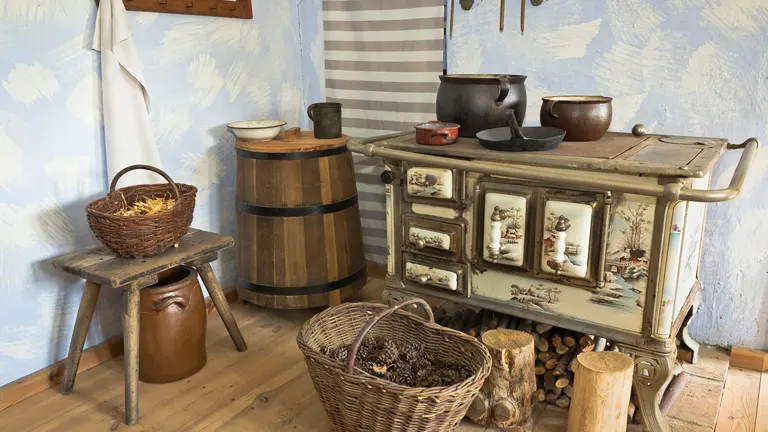
Embrace innovation and environmental responsibility by replacing your old wood stove or fireplace insert with a contemporary, clean-burning model. Traditional stoves, despite being operated under ideal conditions and fueled by high-quality wood, are inherently inefficient and pollute significantly. This is a result of outdated combustion technology that fails to fully burn the wood, leading to excessive emissions of particulates and harmful gases.
Modern clean-burning stoves are designed with advanced combustion technologies that drastically reduce emissions and increase heating efficiency. These stoves achieve a complete burn, ensuring that more of the wood’s energy is converted into heat for your home while minimizing the amount of harmful pollutants released into the environment.
For those who cherish the aesthetic and ambiance of an open fireplace, consider installing a fireplace insert. These inserts are designed to fit into the existing fireplace structure, transforming it into a more efficient heating source. With this upgrade, you’ll retain the visual appeal and cozy atmosphere of a traditional fireplace while significantly improving its heat output and reducing emissions.
Finally, if you possess antique wood stoves, recognize their value as cultural or historical artifacts rather than as practical heating solutions. These pieces often represent a bygone era’s craftsmanship and style. By preserving them as decorative items, you can honor the heritage they represent while aligning with modern environmental standards for home heating. This approach allows you to enjoy the beauty of antique stoves without contributing to the environmental issues associated with their use.
2nd Commandment – Thou Shalt Consider Heat Needs and Dwelling Type

In the pursuit of a new wood stove, you must judiciously select a model that aligns seamlessly with your home’s heating demands and architectural nuances, particularly the chimney’s design and condition. The art of matching a stove to your dwelling goes beyond mere aesthetics; it is a thoughtful balance of functionality, efficiency, and suitability.
Acknowledge that the chimney plays a pivotal role in the stove’s overall performance. Its design, including height, diameter, insulation, and airtightness, significantly influences the draft – the driving force behind efficient combustion. A well-designed chimney ensures a consistent and strong draft, which is vital for drawing in air, fueling the fire, and expelling smoke. As the temperature of the exhaust smoke increases, so does the draft’s effectiveness, facilitating a cleaner and more efficient burn.
When installing your new stove, pay close attention to the air vents’ regulations. These are not mere fixtures but critical components that allow you to control the combustion process. The initial setup and subsequent adjustments of these air vents are key to maintaining an optimal balance between the air intake and exhaust. This balance is crucial, especially during the initial phases of lighting the fire and in the period that follows.
3rd Commandment – Thou Shalt Not Burn Inappropriate Combustibles
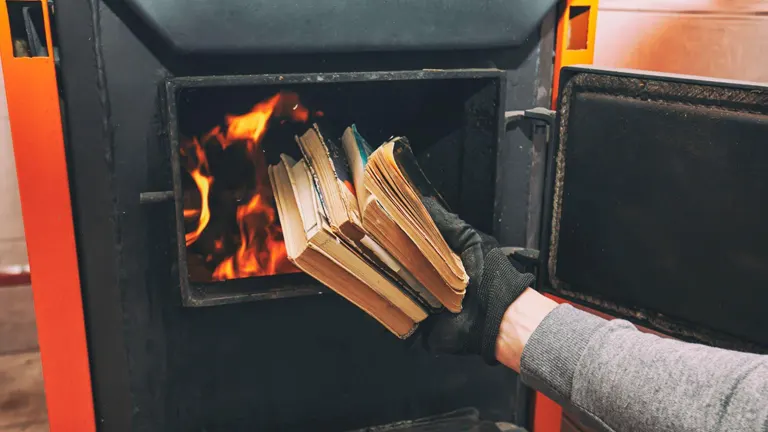
Heed this wisdom: wood stoves are meticulously crafted to burn firewood, and firewood alone. Venturing beyond this intended use by burning alternative materials is not only a desecration of the stove’s purpose but also a perilous act that can escalate emissions and provoke chimney fires.
Understand the nature of the firewood you choose. Different types of wood possess distinct burning characteristics. Hardwoods, such as birch, boast a denser composition, offering a longer and hotter burn compared to the lighter, quicker-burning softer woods like spruce. This distinction is crucial for both the efficiency of your heating and the longevity of your fire.
Exercise caution against the temptation of using thin logs heavily coated in bark or resorting to paraffin firelighters. The excess bark on thin logs contributes to higher emissions of particulates, while the chemical composition of paraffin-based starters is at odds with the natural burning process of wood, potentially leading to harmful fumes or residue.
Furthermore, shun the use of compressed combustibles, such as wood briquettes, and household refuse. These materials are not only unsuitable for wood stoves due to their differing burn properties and potential for toxic emissions but also, their use contravenes the fundamental principles of safe and environmentally responsible wood burning.
4th Commandment – Thou Shalt Light Fires Responsibly
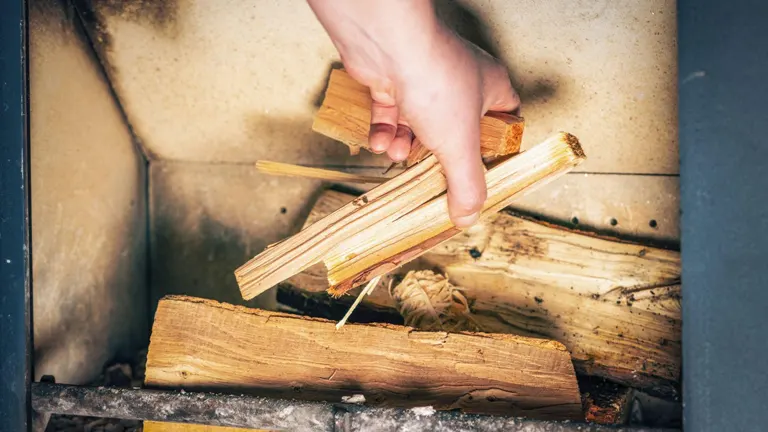
In the sacred act of igniting thy wood stove, diligence and care must be thy guiding principles. Arrange thy logs with purpose and thoughtfulness, laying them horizontally in a structured manner of two layers. This arrangement is not mere chance but a calculated method to foster an efficient burn.
Take heed in placing the larger, more robust logs at the foundation, at the very bottom of the stove. Upon this sturdy base, delicately place the smaller, more nimble logs. This hierarchy of size ensures an even and controlled burn, as the fire gracefully descends from the smaller logs to the larger ones.
For thy kindling, seek the assistance of wood chips or the bark of the birch tree, both known for their eager flame. Place these smaller, more combustible materials atop the log structure. In this manner, when thou lightest the fire from above, the kindling quickly catches flame, gently encouraging the fire to grow and spread downwards. This top-down lighting method promotes a more gradual, cleaner burn, reducing the amount of smoke and unburnt particles.
Abstain from the use of newspapers for lighting. While seemingly convenient, these materials often contain inks and chemicals that, when burned, release undesirable substances into thy home and the heavens above.
5th Commandment – Thou Shalt Adjust the Air Supply at Ignition
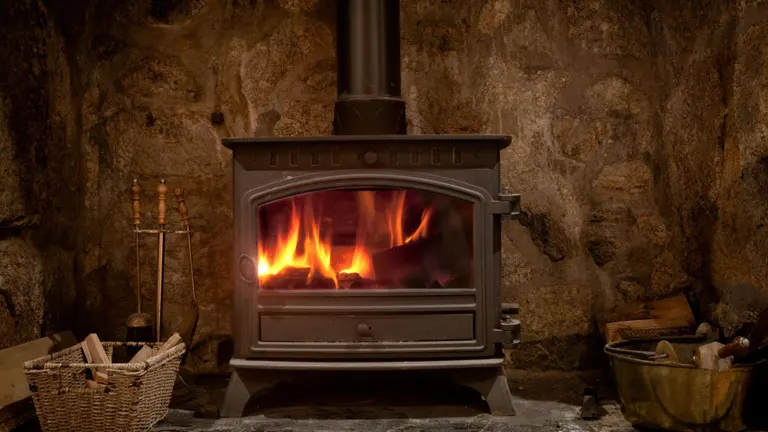
In the initial act of igniting the stove, the mastery of the air supply is crucial. Begin this sacred process by slightly opening the stove door, a gesture that invites just the right amount of air to kindle the flame. During this pivotal moment, ensure that all exhaust fans within the dwelling are stilled, for they can disrupt the delicate balance of air needed for an ideal ignition.
Once the fire takes hold and begins its dance, bestow upon it the breath of life by fully opening the air vents. This surge of air feeds the nascent flames, nurturing them into a robust and healthy fire. But as the fire grows in strength and the draft in the chimney establishes itself, a time comes to reduce the aperture of these vents. This act of temperance balances the airflow, maintaining efficient combustion while safeguarding against the peril of overly zealous flames.
Such vigilance in regulating the air supply serves a dual purpose: it not only ensures the wood burns efficiently, transforming every log into a trove of warmth but also guards against the risk of excessive chimney temperatures. It is known that a chimney overheated is a herald of danger, potentially inviting the calamity of chimney fires.
6th Commandment – Thou Shalt Not Seal the Air Supply Completely
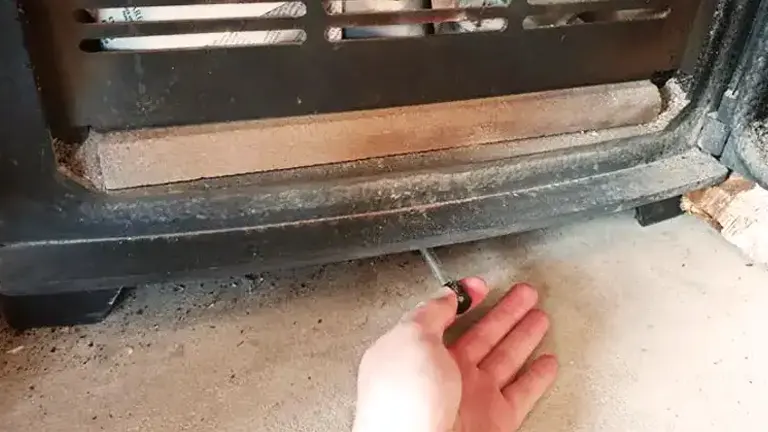
When thou hast kindled thy fire and the stove bathes in the warmth of its own heat, remember the wisdom of moderation, especially in the realm of air supply. The key to a harmonious and efficient burn lies not in sealing off the air completely, but in maintaining a steady, moderate flow. This gentle breath of air, even in the face of a well-established fire, is crucial for the dance of flames to continue in balance and grace.
As thou tendest to thy fire, let thy additions of wood be small and frequent. This practice maintains a steady thermal equilibrium within the stove, ensuring that the fire neither starves for want of fuel nor rages uncontrollably with too much. Each piece of wood is a commitment to the ongoing cycle of warmth and energy.
Beware, for completely closing off the air supply is a path fraught with peril. Such an action, though it may seem a means to prolong the fire’s life, paradoxically leads to a less efficient burn. It starves the fire of oxygen, causing it to smolder and release a greater volume of emissions – a detriment both to the purity of the air and the sanctity of the environment.
7th Commandment – Thou Shalt Regulate Wood Addition
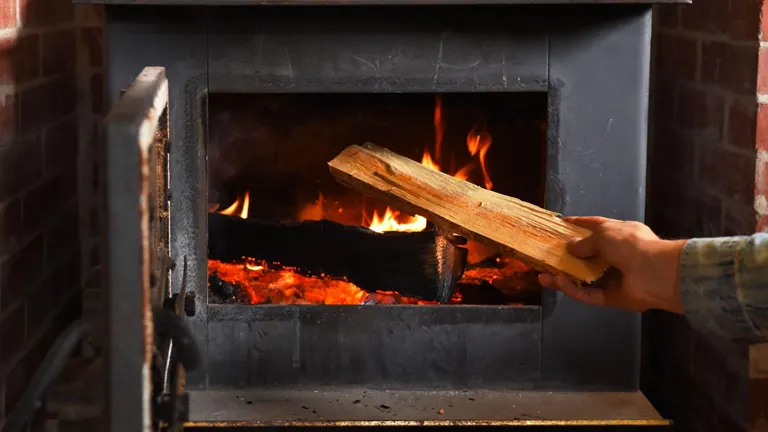
In the stewardship of thy fire, exercise prudence and precision in the art of adding fuel. Approach this task with a measured hand, adding but one log at a time to the radiant bed of embers that lies within. This singular act, simple yet deliberate, ensures that the fire is neither overwhelmed nor undernourished.
As thou layest each log upon the embers, be mindful to place it with care, ensuring it rests free from the stove’s walls or glass. This separation is not mere caution; it is a safeguard against damage to the stove and an assurance of an even and efficient burn.
The rhythm of adding logs is a dance that responds to the tune of the home’s heating needs. There is no universal cadence to this ritual; rather, it varies with the whims of the weather and the desires of those who bask in the stove’s warmth. Adjust the intervals between each log, attuning them to the specific requirements of thy abode.
When the time comes to open the stove door and commit another log to the flames, do so with a gentle hand. A hasty or abrupt movement can disturb the delicate equilibrium within, drawing smoke and unburnt particles into the sanctity of the room. A cautious approach preserves the purity of the air within thy home, just as it sustains the purity of the fire within thy stove.
8th Commandment – Thou Shalt Allow Complete Combustion
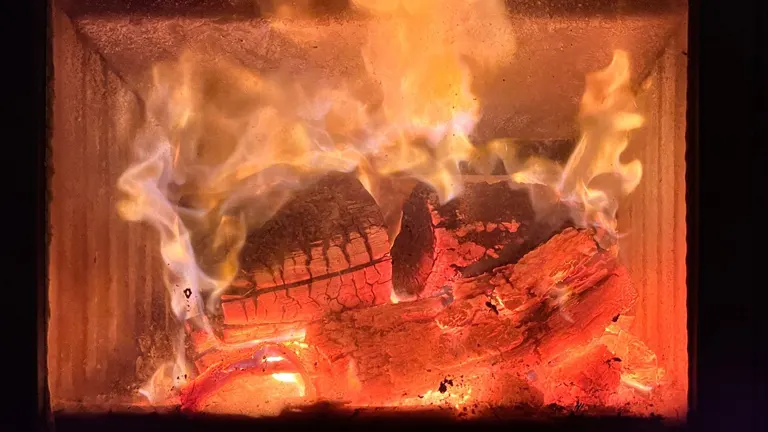
In the final chapters of thy fire’s story, it is imperative to allow each log, each ember, its full journey to ash. To achieve this, maintain the air vent in an open state, permitting the breath of air to feed the flames until their last flicker. This patience ensures that every morsel of fuel is honored, fully releasing its warmth and energy.
As the flames dwindle and the coals glow with a subdued yet intense heat, consider preserving these remnants – the charcoal – as a legacy for the next fire. These charred remains, born from the heart of a previous blaze, can serve as a vigorous and willing catalyst for future fires.
However, be vigilant in removing the ashes, those final whispers of the fire that once was. These ashes, if left to accumulate, can impede airflow and diminish the efficiency of future fires. Their removal is not merely a task of cleanliness but an act of preparation, setting the stage for the next cycle of warmth and light.
When the stove completes its duty and stands in waiting, not in use, bestow upon it a final act of closure by sealing the air vents. This act conserves the heat within the home, preventing it from being lost up the chimney. It is a gesture of completion, marking the end of one fire’s life and the preparation for the next.
9th Commandment – Thou Shalt Maintain Thy Stove

In the guardianship of thy stove, regular and diligent maintenance is a sacred duty, essential to its longevity and performance. This commitment to care extends beyond mere cleaning; it is an act of stewardship that honors the hearth’s role in the home.
Commence with the humble yet vital task of ash removal. This ritual, performed consistently, prevents the accumulation of spent remnants which can hinder airflow and diminish the stove’s efficiency. Let not a day pass without considering the state of thy stove’s ash bed.
Turn thy attention also to the gaskets, those silent sentinels that seal the stove’s doors and windows. Inspect them with a discerning eye, seeking signs of wear or damage. A breach in these guardians can lead to unwanted air ingress, upsetting the delicate balance within the stove and jeopardizing its safe operation.
The chimney, the stove’s steadfast companion, demands its share of care. Engage regularly in the sweeping of this vital pathway. This act clears the way for smoke to ascend freely, preventing the dangerous accumulation of creosote, a harbinger of chimney fires. Let not complacency lead thee to neglect this crucial task.
Periodically, the internal surfaces and the stove pipe call for thy attention. Clean them with care to remove any soot or residue that may have gathered. These deposits, left unchecked, can impede heat transfer and pose a latent risk of fire.
10th Commandment – Thou Shalt Not Waste Heat Outdoors
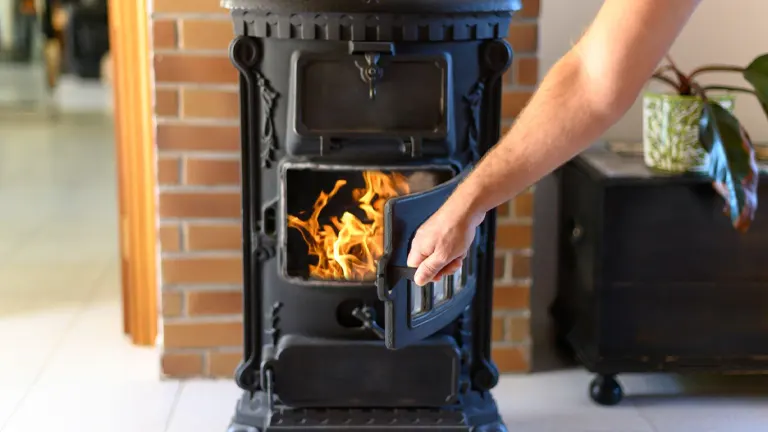
In this last commandment of stewardship over thy hearth, be ever vigilant against the wasteful escape of heat into the great outdoors. The judicious use of energy within your home is not just a matter of practicality, but also one of respecting and conserving the natural resources at your disposal.
Select only dry firewood, ideally with a moisture content below 20%, for it burns more fervently and cleanly than its damp counterparts. Avoid the temptation to dry fresh logs indoors, as this practice can be inefficient and may even pose risks to your health and safety.
Mind the air vents of thy stove with care. While necessary for the breath of life for your flames, excessive opening can invite too much cold air, leading to unnecessary overworking of your fire. Adjust these vents with precision, balancing the need for air with the retention of heat.
Monitor the quantity of wood thou adds to the blaze, particularly when the stove is already aglow with heat. Overloading the stove not only wastes wood but also sends valuable heat up the chimney, a loss both to thy comfort and thy pocket.
Heed the signs of inefficiency: excessive smoke emissions and a surplus of charcoal in the ashes. These are indicators that the heat generated is not being utilized effectively within your home but is instead being lost to the external environment.
FAQs
- Can I cook on my wood stove?
Yes, many wood stoves are designed with flat tops that can be used for cooking. This method adds a rustic charm to meal preparation and is also energy efficient. - How does a wood stove impact my home’s insurance?
Installing a wood stove can affect your home insurance policy. Some insurers may increase premiums due to perceived risks, while others might require an inspection. It’s important to inform your insurance company when installing a wood stove. - Can wood stoves be environmentally friendly?
Modern wood stoves are designed to be much more environmentally friendly than older models. They burn more efficiently and produce fewer emissions. Choosing the right stove and using it correctly are key factors in minimizing environmental impact. - What’s the difference between a wood stove and a pellet stove?
Wood stoves burn firewood, while pellet stoves use small, compressed pellets made from wood waste. Pellet stoves often have automatic feeders and are easier to maintain, but they require electricity to operate. - How often should the chimney of a wood stove be cleaned?
It’s recommended to have your chimney inspected and cleaned at least once a year, preferably before the start of the heating season. However, usage and the type of wood burned can necessitate more frequent cleanings. - Is it possible to use a wood stove in a smoke-controlled area?
Yes, but you need a DEFRA (Department for Environment, Food & Rural Affairs) approved stove in the UK, for example. These stoves are designed to burn wood efficiently, reducing smoke emissions to comply with regulations. - Can I make my wood stove more efficient?
Yes, using dry, seasoned wood, ensuring proper ventilation, and regular maintenance can significantly improve your stove’s efficiency. Additionally, using a stove fan can help distribute the heat more evenly in the room. - Are there any health risks associated with wood stoves?
If not properly maintained, wood stoves can emit harmful pollutants, both indoors and outdoors, which can affect air quality and respiratory health. Proper ventilation and using the right kind of wood can mitigate these risks. - How does the size of a wood stove affect its performance?
The size of the stove should be proportional to the space it needs to heat. Too large a stove can overheat the space, while a too-small one will be inefficient. Proper sizing is crucial for optimal performance. - Can I install a wood stove myself?
While it’s possible, installing a wood stove involves critical considerations related to safety, efficiency, and local building codes. It’s generally recommended to have a certified professional install your stove to ensure it meets all safety standards.

David Murray
Forestry AuthorI'm David Murry, a forestry equipment specialist with a focus on chainsaw operation. With over 13 years of experience, I've honed my skills in operating and maintaining a wide range of machinery, from chainsaws to log splitters. My passion for the outdoors and commitment to sustainable forestry drive my work, which emphasizes safety, efficiency, and staying updated with industry advancements. Additionally, I'm dedicated to sharing my expertise and promoting environmental awareness within the forestry community.
4 comments
I wish my neighbour would comply with the commandment of only burning the correct wood
Anne Donnellan
November 21, 2023 11:26 pmI positively love this article! I am reading it as I await the arrival of my friend and confidant chinmey sweep. When I purchased my home it was without central heat. He walked me through the entire process and when it came time to purchase a new stove he guided me to a beautiful little Woodstock Soapstone perfect for my little 1100sf house and my lifetime supply of wood. Now I am looking for a new insurance company as Overly Insurance had dropped me because I have the woodstove and live more than 5 miles from the fire station. Of course, the house and the firestation are exactly where they were before and I've had the stove(s) for 18 years.
Sharon Holdren
November 21, 2023 3:09 pmBought my first wood stove in 1995, a Country Stoves free standing stove with 2-stage combustion, an excellent appliance. Sold it when i sold that house five years later. I cleaned the chimney and the soot would not fill a dixie cup. It blew my mind to see wood burning revert backwards post 2000. Wood is an awesome fuel when oxidized with "modern" technology.




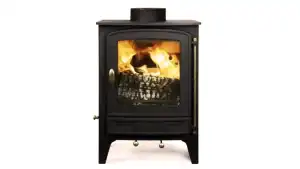




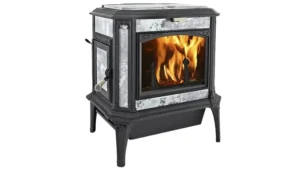


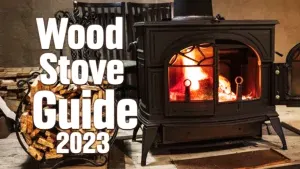
Anyone with a stove should read a book called 'Norwegian Wood' by Lars Mytting. I'm not an avid reader but read it end to end. I've had Stoves for over 40 years and thought I knew what I was doing but didn't think about 'top lighting' until I read about it in the final chapter 'the fire.' This was concurred in the article but the book goes into great detail as to why this works to reduce smoke at the lighting stage of the fire.
Alan Entwistle
November 22, 2023 8:30 am